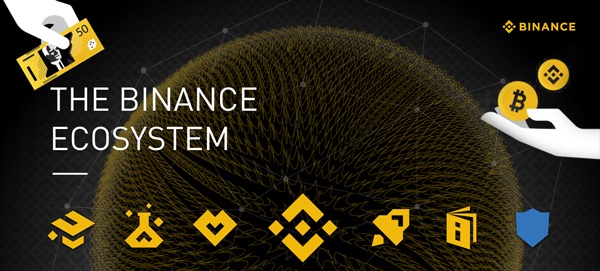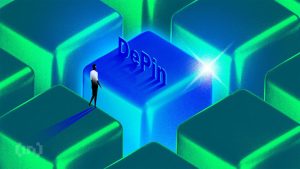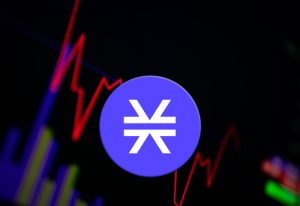‘We need scaling solutions that work,’ Says RioDeFi CEO, James Anderson

BeinCrypto spoke to James Anderson, CEO of RioDeFi, about his platform, where DeFi needs to go for mainstream, and the benefits non-fungible tokens (NFTs) will have in the future.
DeFi is growing. However, those who are outside the crypto world are likely to be confused by this new experience of finance.
As a result, many platforms are growing to meet the need to connect the “average” person to DeFi opportunities. This is the goal of RioDeFi.
The platform calls itself the “next frontier of finance,” and CEO James Anderson is passionate about this solutions-focused approach.
DeFi for everyday people
“Our main mission is to bridge traditional and decentralized finance. We do that by connecting blockchains with financial institutions. Some of the things we’ll be building are very centralized finance.”
“A lot of people found it difficult to utilize the various DeFi protocols because they aren’t quite user-friendly. For many people, the crypto space can be very overwhelming,” he says.
As a result, RioDeFi is working to take the confusion out of setting up a wallet and dealing in crypto.
“So we wanted to create a solution. So for a real wallet, we have an OAuth login function that’s coming online very soon that will allow people to use their Gmail, their Facebook, Reddit, and other social media accounts. Basically, create a wallet and manage their private key in a decentralized way. But using those accounts so that they’re not having to back up this phrase that they’re not really sure of and they don’t know how to do it,” he explains.
“We also think that the future of blockchains is all about interoperability”
Alongside making connecting to the DeFi space easier, Anderson and his team aim to create better interpretability. They consider this key to growing blockchain and DeFi use into the future.
“So, the sort of traditional blockchains have been very siloed so bitcoin you can only interact with bitcoin right, Ethereum you can interact with Ethereum, and then any of the Ethereum based tokens these ERC 20 tokens, but if you want Ethereum to talk to Cardano or to talk to Polkadot or something else like that’s not happening currently.”
“So we actually built RioChain on Polkadot’s substrate framework. It’s this framework for blockchain interoperability, and so as that ecosystem grows, it allows blockchains to talk to each other and share messages and share assets across these, these substrate-based blockchains.”
Building a bridge with C-DeFi
“It’s funny because Binance created this smart chain. They call it C-DeFi like centralized DeFi. Which kind of an oxymoron, in some sense. But at the same time, I understand why they did what they do like there are benefits to this kind of system.”
For Anderson, this “C-DeFi” offers the opportunity to connect the worlds of traditional finance and DeFi in the most straightforward way. Through this connected approach, he sees his platform an opportunity for both newbies and DeFi hardliners.
“Things like account recovery options, like how are you going to have new people in cryptocurrency, if they lose their password and then all their funds are gone right. So for some people, that’s okay, and they would like that because they want to be their own bank, but for other people, that’s a little bit too much, and so we want to have both options for the people,” he says.
NFTs on DeFi
Alongside DeFi, NFT has been among this year’s biggest crypto buzzwords. For Anderson, these tokens offer utility, for collectibles and financial assets.
A new project building on the RioDeFi platform encapsulates this combination. It aims to provide a luxury good NFT platform for those with high-priced goods.
“We haven’t announced this project yet, but it’s in our incubation hub, and they’re going to have these products such as luxury goods. So that could be anything from like a Chanel bag to a Rolex watch, even a car like a classic car or gold bars even,” he says.
The platform makes it possible for owners to show off their luxury items through verified ownership. In addition, it also offers a way to leverage those goods for money.
“So you could take these luxury assets, put them into custody, mint an NFT based on them, and then instead of taking out a loan via a pawn shop, what if instead of the loan being provided by this, this particular pawnshop with their bank connections, what if it’s provided by a decentralized pool of liquidity providers who want interest on a loan,” he explains.
“At the end of the day, if the loan is defaulted on, someone can go and claim the Rolex, one of the lenders, or it can go into a liquidation auction it can be sold into cash or stable coins. Then it can be a global pool of money that can support these kinds of things.”
Practical use of NFTs
The value of NFTs through use cases is clear to Anderson. The space for growth and opportunity beyond the current hype is vast.
For him, there are areas where NFTs will really show their strength and utility. These include real estate, sovereign identity, and expansion in financial assets.
“In the future, I think there’ll be more of these sort of self-sovereign identities that the various companies will give the authorizations or the government bodies will authorize certain information about my identity. Then I have the opportunity to share that or not with any given corporation or government body.”
“As more people get these sovereign IDs that they manage. They can tie that with, let’s say, a financial institution or bank that’s managing their loan for their property deed. And so all these things that are right now, stored, physically, and also digitally, can be stored digitally but within NFT. What that will enable in the future, for example, is easier decentralized loans,” he says.
Ultimately, Anderson sees NFTs as a way to store ownership in a world that is becoming increadingly digitizied.
Real estate as a future use case
When it comes to real estate, NFTs are already slowly showing their use cases. Recently, the Founder of Tech Crunch, Michael Arrington, sold his Ukraine apartment as an NFT.
For Anderson, the ability to make property deeds into NFTs opens up a world of opportunity.
“So right now the deeds are kept in a local government bureau and different offices depending on where you are in the world. But then that asset can be stored for example as an NFT, so you could have the file, the digital version of the files stored on IPFS or centralized servers, it could be on a mix of servers. So it’s very secure and backed up. You have that deed, available as an NFT, and whoever holds the deed holds that property essentially. You can then have that custody right with the bank in the future,” he says.
For those who don’t want to refinance with a bank, NFTs could make it possible to refinance from the community.
“And so the community could, for example, lend the money they get maybe a higher interest rate than what they could get on other assets. It’s a relatively low-risk thing, potentially, because your credit score could be tied to your ID. The deed is on this NFT and all of that is trackable on the chain, on blockchain. That can all be verified,” he says
“And then, the loan can happen automatically, and if I miss my payment then I lose my deed, right, the property, or it goes into a default process something, someone could liquidate the property, and then the standard process then applies right.”
Anderson acknowledges that these applications are still off in the future but sees the potential for their use.
“We need scaling solutions that work”
However, for Anderson, mainstreaming and acceptance requires better scaling solutions for DeFi, NFTs, and blockchain.
“I think with these NFTs and everything else. It’s really important that they be done efficiently.”
“The gas fees are often quite high. So the transaction fees are quite variable. Well, sometimes it’s the network’s very congested. Things can get stuck, so ETF transfers that fail or don’t go through for whatever reason because someone set the gas too low because it was really low one second ago. Then it got really high and this can actually create a lot of friction for people to buy NFTs,” he explains.
For Anderson, there are multiple chains on offer which can cause confusion. RioChain is trying to connect all of these while also offering its own solutions as well.
“We need scaling solutions that work.”
Disclaimer
All the information contained on our website is published in good faith and for general information purposes only. Any action the reader takes upon the information found on our website is strictly at their own risk.















